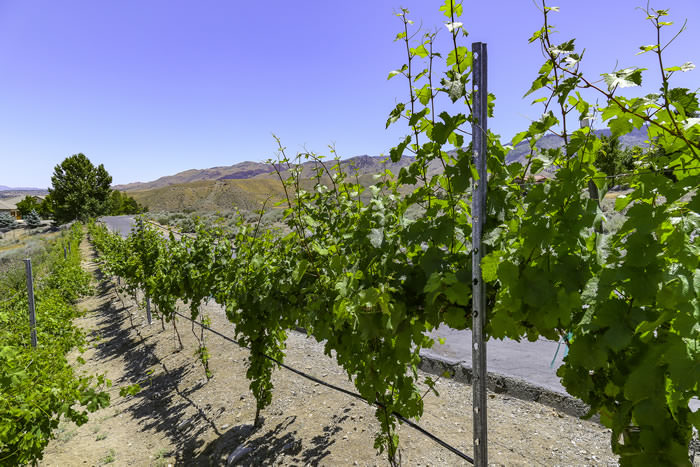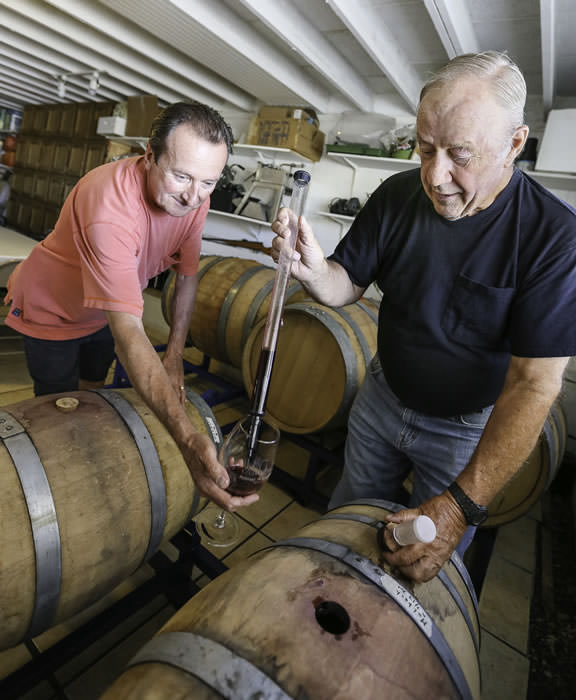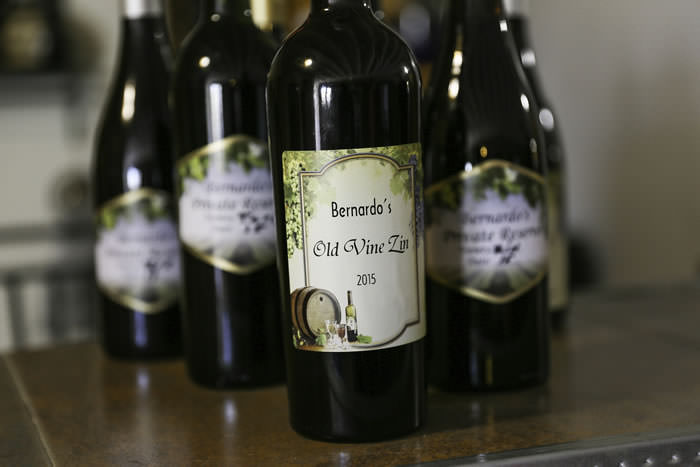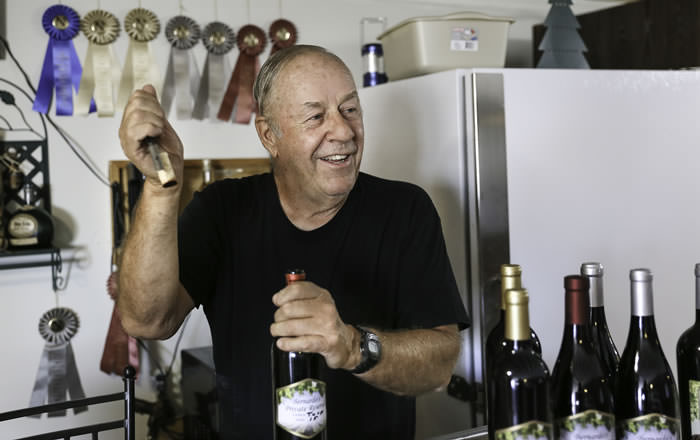drink tank
VINTNER AMBITION
Home winemakers flourish in Reno-Tahoe.
WRITTEN BY HEIDI BETHEL
PHOTOS BY SHAUN HUNTER

Gone are the days of stomping grapes in a giant vat with the likes of Lucy and Ethel. Today, local home winemakers have mastered maceration, making the winemaking process relatively easy and well worth the effort.
Bill Coplin and Joe Bernardo of Nevada Vines & Wines in Reno, along with many other enthusiastic partners, are busy spreading the good word of viticulture and vino. While it may seem intimidating, the process actually is quite simple, they say.
“Making wine can be very prescriptive, as in ‘recipe book,’” Coplin says. “If you can cook, you can make wine. There is some specialized equipment and some know-how involved. You’ll need one or two vessels, a siphon, and a kit to measure acidity and pH levels. Of course it can get exotic, but plenty of good wines come from a few steps.”


One, two … eight
More than 30 local home winemakers and backyard vineyard owners participate in the NV&W Academy. Here, they guide folks using the following eight steps for delicious results:
Harvest your own grapes or, in April/May, contract to purchase good fruit for an October delivery.
Crush, destem, and press the fruit. You can do this by hand or rent specialized equipment from NV&W Academy or The Reno Homebrewer.
Treat the juice with a mild bacteria and wild yeast inhibitor such as potassium metabisulfite. This helps prevent oxidation and preserves the fruity flavor in wine.
Ferment the juice using commercial wine yeast. These little superorganisms consume and process sugars, leaving behind alcohol and carbon dioxide as their byproduct.
Set the vessel in a room with a constantly warm temperature for fermenting — this process takes a few weeks.
Let the yeast settle, and rack (pour off) the finished wine, leaving the dregs, or sediment. Store wine in a cool room such as a cellar or crawl space.
Rack, age, and blend to taste. The secondary fermentation process takes a year or more depending on the desired flavor profile.
Bottle and label.
Coplin suggests that anyone who is interested in getting started should purchase From Vines to Wines: The Complete Guide to Growing Grapes and Making Your Own Wine by Jeff Cox. In it, Cox details the process from breaking ground to savoring the finished product.

Divine desert wine
The Sierra is an ideal place to grow grapes and produce wine. And the varieties span the full spectrum.
“The experiences are myriad,” Coplin says. “There are experimenters who make everything from tomato wine to exotic imported fruits, and others use Nevada grapes only. One of the wonderful experiences is making new friends while tending crops or making wine together.”
For those looking to try their hand at winemaking, Coplin and Bernardo have a few tips. While the high desert presents a great climate, the growing season is shorter than most. Choosing the right variety of vines, plus judicious leaf pulling, can enhance growth time.
“You also want to prune late and wait for bud break,” Coplin adds.
Freelance writer Heidi Bethel appreciates the love and care that go into the perfect bottle of wine. She is eager to try her hand at making a nice blended white at home!
Resources
Schooled by vino
For winemaker hopefuls, Reno is home to a few organizations teaching folks about the process.
Nevada Vines & Wines During a one-year course, instructors, including Bernardo, cover everything from raising plants to making, bottling, and aging wine. This hands-on program meets monthly, and students can expect to produce eight to 12 gallons of wine. For details, visit Nvandw.com.
University of Nevada, Reno Through their statewide initiative, UNR’s College of Agriculture (Unr.edu/cabnr) and the University of Nevada Cooperative Extension (Www.unc.unr.edu) host various workshops and classes on growing grapes and making wine. For details, visit their websites.
The Reno Homebrewer Inside this quaint shop is everything a home winemaker might need, sans fruit. Staffers also provide expert advice and free instruction on DIY beer, wine, soda, cheese, and more. For details, visit Renohomebrewer.com.


